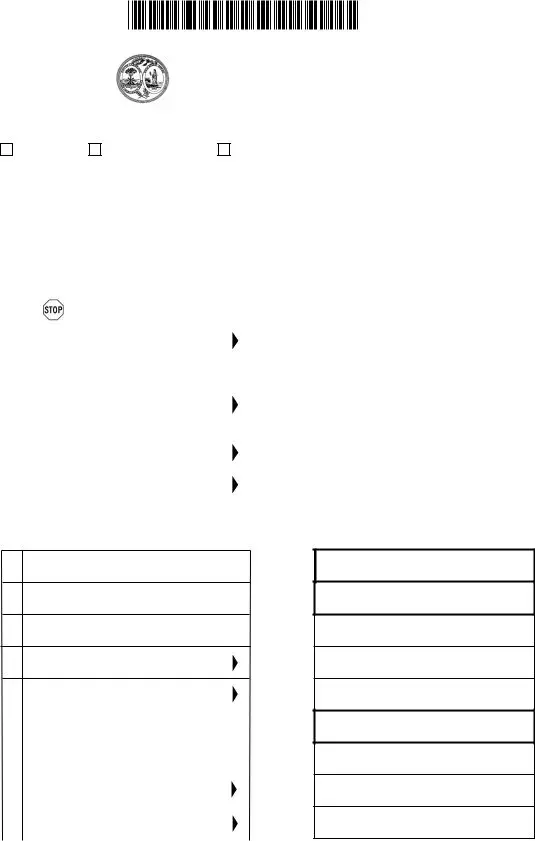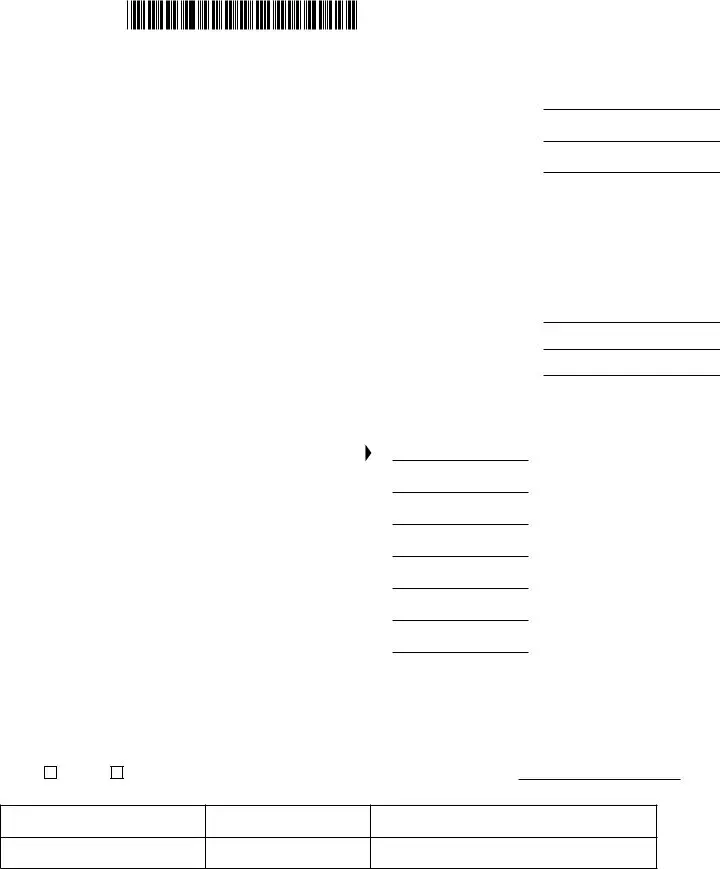The Form ST-1, often used in other states for reporting sales and use tax, shares common ground with the South Carolina ST-455 form. Both forms are designed for businesses to report and remit taxes collected from sales, rentals, or services provided. They require detailed accounting of gross proceeds, tax-exempt sales, and taxable sales, followed by the calculation of tax due. Each form is unique to its state but serves the same foundational purpose of tax declaration for businesses.
Similar to the ST-455, Form Sales Tax Exemption Certificate (variously numbered by state) is another document essential for businesses. While the ST-455 is focused on reporting sales and use tax, exemption certificates are used by purchasers to notify sellers of their tax-exempt status. Both interact in the universe of sales tax by defining what gets taxed and what doesn't, based on the nature of the purchase and the purchaser's status. This interaction ensures the correct application and remittance of sales tax.
The Employer's Quarterly Federal Tax Return, Form 941, parallels the ST-455 in terms of periodic tax reporting. While Form 941 pertains to federal payroll taxes withheld from employees, including social security and Medicare taxes, the ST-455 deals with state-level sales and use taxes. Both forms are crucial for compliance with respective tax obligations and require accurate record-keeping and timely submission to avoid penalties.
The Annual Resale Certificate for Sales Tax, which varies by state, is akin to certain aspects of the ST-455. It allows businesses to purchase goods tax-free that will be resold. The nexus between them lies in the sale and purchase transactions taxable under state law. They ensure that tax is only applied to the end consumer, preventing double taxation throughout the supply chain.
Form W-2, Wage and Tax Statement, while primarily for reporting wages, tips, and other compensation paid to employees, shares the essential feature of tax reporting with the ST-455. Both are formal documents required by government entities to ensure tax compliance and proper collection and remittance of taxes. These forms play significant roles in the broader tax system, contributing to state and federal revenue.
Use Tax Registration forms, specific to each state, share similarities with the ST-455 in that they address the use tax aspect. While the ST-455 encompasses both sales and use tax reporting, a Use Tax Registration form is specifically for businesses to register for use tax obligations. This distinction highlights the two sides of consumer tax – for purchasing items for use or consumption when sales tax wasn't charged at the point of sale.
The Form 1040, U.S. Individual Income Tax Return, although catering to individuals, complements the ST-455's role in the tax infrastructure. Both facilitate the collection of taxes, albeit for different tax types – sales and use tax versus income tax. Each form is integral to the taxpayer's compliance with state and federal laws, ensuring accurate revenue collection for government operations.
Certificate of Registration forms, required for businesses to legally operate within a state, indirectly connect with the ST-455 form. Before a business can file taxes using forms like the ST-455, it must first be registered and recognized by the state. This registration is a prerequisite for tax filing and compliance, establishing the legal and operational framework within which sales and use taxes are collected and remitted.
The Business License Application, common across municipalities, while not a tax document per se, alignths with the essence of the ST-455. Both are foundational to a business's operation within a jurisdiction, ensuring compliance with local laws and tax obligations. The application for a business license is a step towards becoming a tax-remittant entity, further clarified and quantified through tax reporting forms like the ST-455.
The Vehicle Registration Tax and Fee forms, specific to each state's Department of Motor Vehicles (DMV), while primarily for vehicle registration, share the principle of state-level taxation and form submission with the ST-455. Each vehicle registration includes fees and taxes that contribute to state revenue, similar to sales and use taxes reported on the ST-455. These forms collectively embody the diverse nature of state tax collection mechanisms, serving various sectors and purposes.


